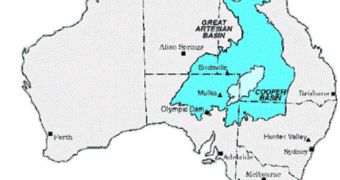A group of investigators in Australia have recently pinpointed the location of the second largest crater on the continent. It was produced by an intense meteorite impact, that took place millions of years ago.
The formation was discovered by a team of experts from the University of Queensland in Australia, who were led by geothermal energy researchers at the university.
The impact site was identified after investigators found rocky structures that could have only formed following a cosmic collision.
The shock of a meteorite impact, the team says, is the only thing that could have led to the development of such structures. The work was led by Australian National University expert Dr. Andrew Glikson and University of Queensland scientist Dr. Tonguç Uysal.
The newly-found landscape feature lies at the border of Queensland and South Australia, in an area called the Cooper Basin. It was found as the team was researching geothermal energy in the area.
In a recent interview, Dr. Glikson explained that the space impactor was most likely very large, with a diameter between 5 and 7.5 miles (8 to 12 kilometers), Universe Today reports.
The exact nature of the space body could not be immediately established, as the experts believe that a cluster of smaller impacts may have taken place around the original crater.
They are now trying to locate these features, in hopes that studying them would give additional insights into whether the impactor was a meteorite, an asteroid, or perhaps even a comet.
The age of the crater has been provisionally estimated to be around 300 million years ago. An area with a diameter of about 80 kilometer (50 miles) was affected by the impact directly
“Dr Uysal is studying the geochemistry and isotopes of granites from the basement below the Cooper Basin and observed potential shock lamella in the quartz grains,” Dr. Glikson explains.
These formations only appear after an area is affected by volcanic eruptions, meteorite impacts or earthquakes, geologists say.
At this point, area of the entire impact structure, not just the primary site, is estimate to cover some 10,000 square kilometers, some 3,850 miles, and have a depth of about 1,700 feet (524 meters).
“Studies of the geophysical structure of the basement below the Cooper Basin aimed at defining the impact structure,” Dr. Glikson explains.

 14 DAY TRIAL //
14 DAY TRIAL //